B2B Marketing Report: Customer Segmentation and Strategies for Viking
VerifiedAdded on 2023/04/23
|10
|893
|145
Report
AI Summary
This report provides an overview of B2B marketing, examining various aspects relevant to Viking. It begins by defining different types of customers in B2B markets, followed by a comparison of industrial goods and services versus consumer products. The report then differentiates between SIC and NAICS codes, detailing their history, features, and considerations. The importance of market segmentation for Viking is discussed, highlighting the benefits and appropriate segmentation variables such as geographic, demographic, psychological, and behavioral factors. The report concludes with a procedure for selecting and evaluating market segments, including opportunity cost, financial issues, structural attractiveness, strategic direction, and marketing expertise. References from strategic management and marketing literature are included to support the analysis.

BUSINESS TO
BUSINESS MARKETING
Viking
BUSINESS MARKETING
Viking
Paraphrase This Document
Need a fresh take? Get an instant paraphrase of this document with our AI Paraphraser
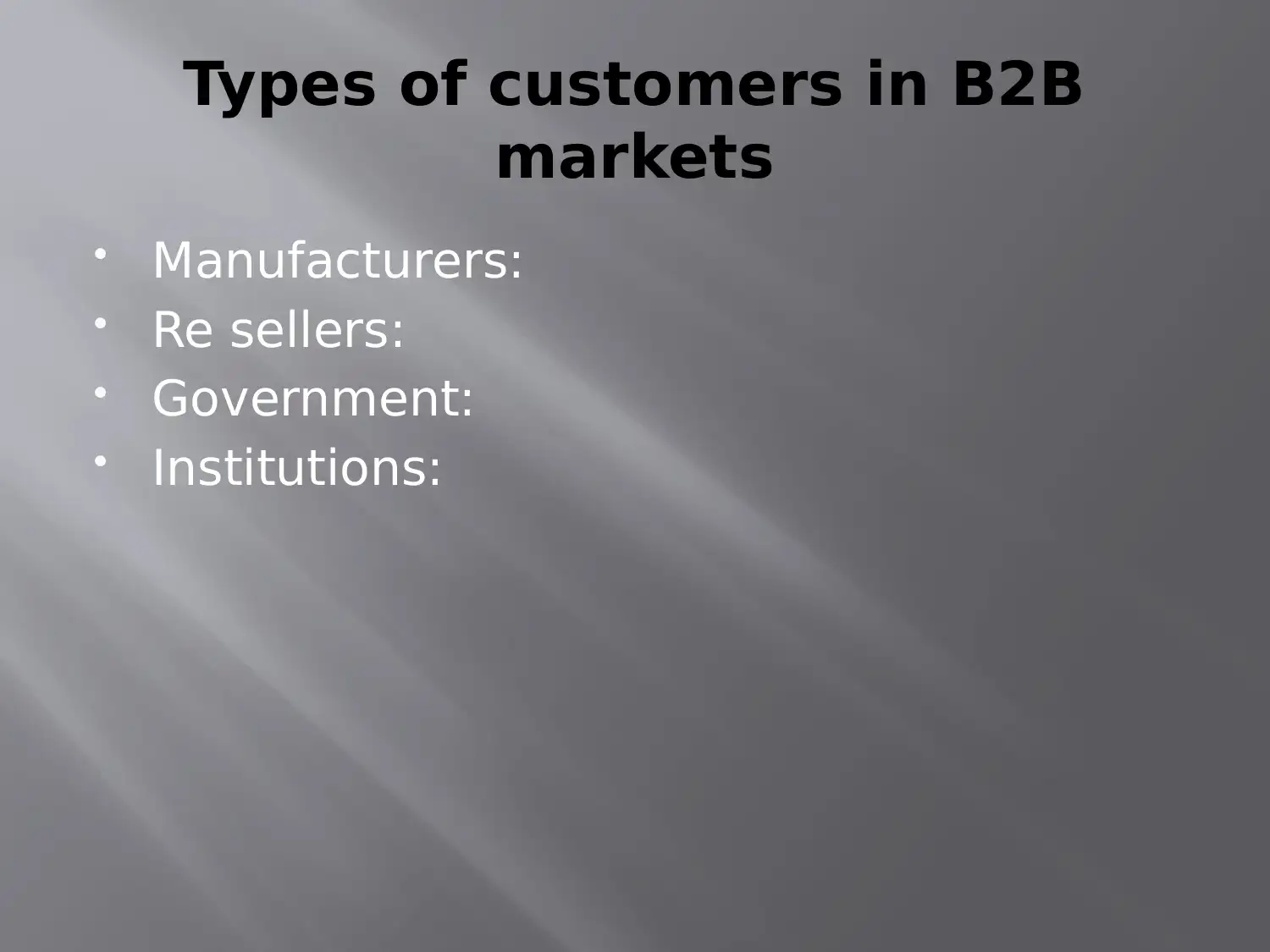
Types of customers in B2B
markets
Manufacturers:
Re sellers:
Government:
Institutions:
markets
Manufacturers:
Re sellers:
Government:
Institutions:
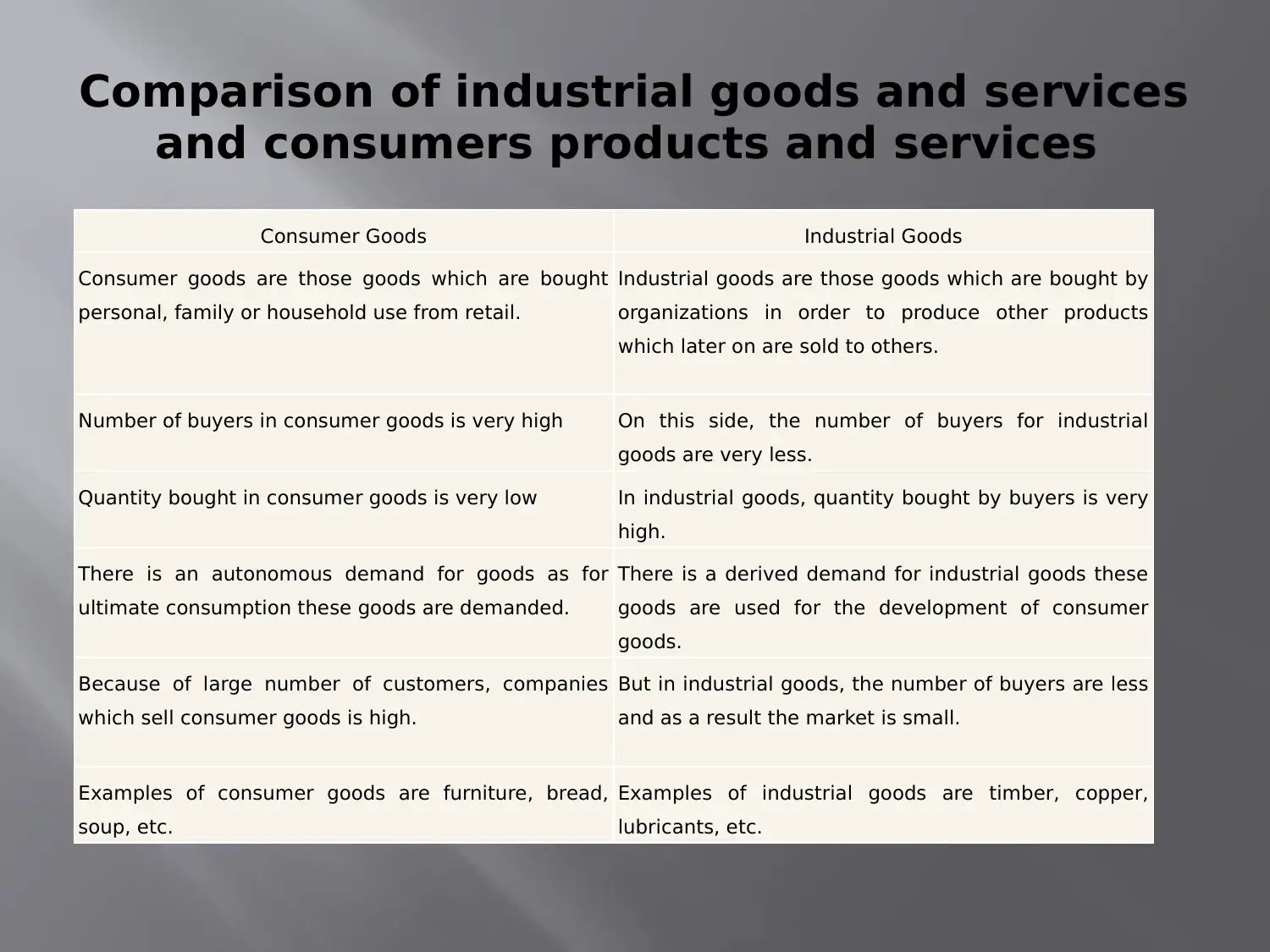
Comparison of industrial goods and services
and consumers products and services
Consumer Goods Industrial Goods
Consumer goods are those goods which are bought
personal, family or household use from retail.
Industrial goods are those goods which are bought by
organizations in order to produce other products
which later on are sold to others.
Number of buyers in consumer goods is very high On this side, the number of buyers for industrial
goods are very less.
Quantity bought in consumer goods is very low In industrial goods, quantity bought by buyers is very
high.
There is an autonomous demand for goods as for
ultimate consumption these goods are demanded.
There is a derived demand for industrial goods these
goods are used for the development of consumer
goods.
Because of large number of customers, companies
which sell consumer goods is high.
But in industrial goods, the number of buyers are less
and as a result the market is small.
Examples of consumer goods are furniture, bread,
soup, etc.
Examples of industrial goods are timber, copper,
lubricants, etc.
and consumers products and services
Consumer Goods Industrial Goods
Consumer goods are those goods which are bought
personal, family or household use from retail.
Industrial goods are those goods which are bought by
organizations in order to produce other products
which later on are sold to others.
Number of buyers in consumer goods is very high On this side, the number of buyers for industrial
goods are very less.
Quantity bought in consumer goods is very low In industrial goods, quantity bought by buyers is very
high.
There is an autonomous demand for goods as for
ultimate consumption these goods are demanded.
There is a derived demand for industrial goods these
goods are used for the development of consumer
goods.
Because of large number of customers, companies
which sell consumer goods is high.
But in industrial goods, the number of buyers are less
and as a result the market is small.
Examples of consumer goods are furniture, bread,
soup, etc.
Examples of industrial goods are timber, copper,
lubricants, etc.
⊘ This is a preview!⊘
Do you want full access?
Subscribe today to unlock all pages.

Trusted by 1+ million students worldwide
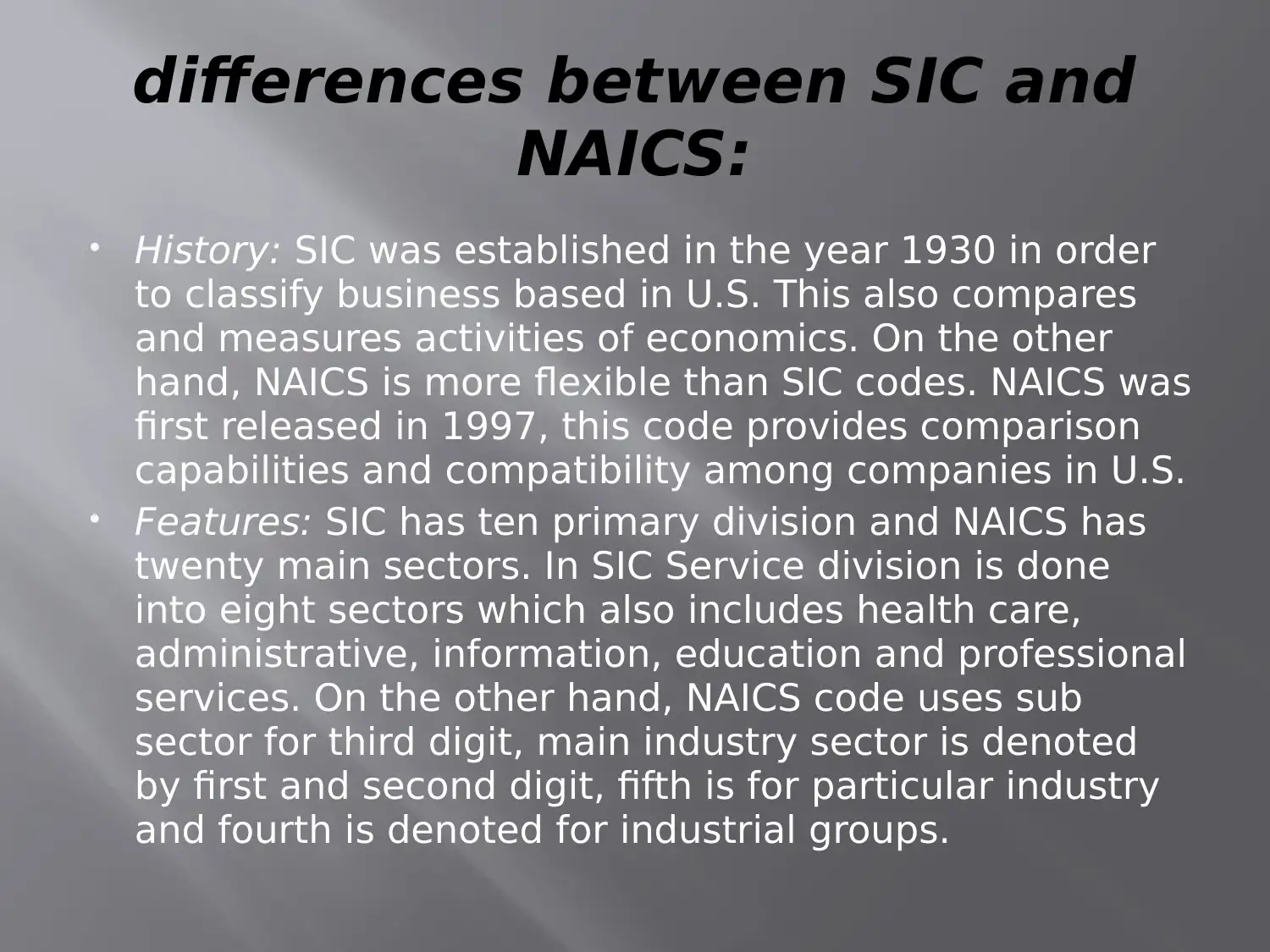
differences between SIC and
NAICS:
History: SIC was established in the year 1930 in order
to classify business based in U.S. This also compares
and measures activities of economics. On the other
hand, NAICS is more flexible than SIC codes. NAICS was
first released in 1997, this code provides comparison
capabilities and compatibility among companies in U.S.
Features: SIC has ten primary division and NAICS has
twenty main sectors. In SIC Service division is done
into eight sectors which also includes health care,
administrative, information, education and professional
services. On the other hand, NAICS code uses sub
sector for third digit, main industry sector is denoted
by first and second digit, fifth is for particular industry
and fourth is denoted for industrial groups.
NAICS:
History: SIC was established in the year 1930 in order
to classify business based in U.S. This also compares
and measures activities of economics. On the other
hand, NAICS is more flexible than SIC codes. NAICS was
first released in 1997, this code provides comparison
capabilities and compatibility among companies in U.S.
Features: SIC has ten primary division and NAICS has
twenty main sectors. In SIC Service division is done
into eight sectors which also includes health care,
administrative, information, education and professional
services. On the other hand, NAICS code uses sub
sector for third digit, main industry sector is denoted
by first and second digit, fifth is for particular industry
and fourth is denoted for industrial groups.
Paraphrase This Document
Need a fresh take? Get an instant paraphrase of this document with our AI Paraphraser
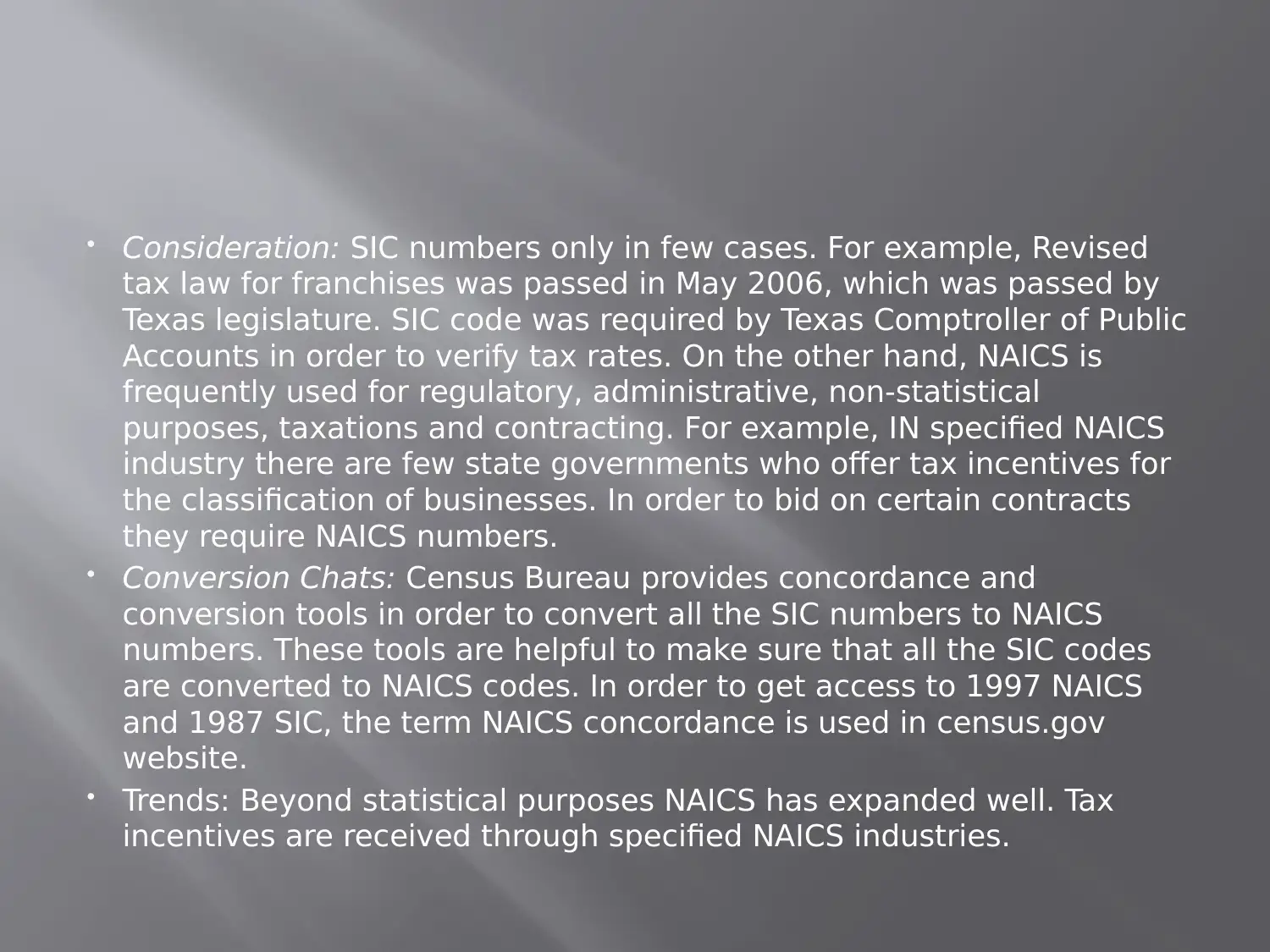
Consideration: SIC numbers only in few cases. For example, Revised
tax law for franchises was passed in May 2006, which was passed by
Texas legislature. SIC code was required by Texas Comptroller of Public
Accounts in order to verify tax rates. On the other hand, NAICS is
frequently used for regulatory, administrative, non-statistical
purposes, taxations and contracting. For example, IN specified NAICS
industry there are few state governments who offer tax incentives for
the classification of businesses. In order to bid on certain contracts
they require NAICS numbers.
Conversion Chats: Census Bureau provides concordance and
conversion tools in order to convert all the SIC numbers to NAICS
numbers. These tools are helpful to make sure that all the SIC codes
are converted to NAICS codes. In order to get access to 1997 NAICS
and 1987 SIC, the term NAICS concordance is used in census.gov
website.
Trends: Beyond statistical purposes NAICS has expanded well. Tax
incentives are received through specified NAICS industries.
tax law for franchises was passed in May 2006, which was passed by
Texas legislature. SIC code was required by Texas Comptroller of Public
Accounts in order to verify tax rates. On the other hand, NAICS is
frequently used for regulatory, administrative, non-statistical
purposes, taxations and contracting. For example, IN specified NAICS
industry there are few state governments who offer tax incentives for
the classification of businesses. In order to bid on certain contracts
they require NAICS numbers.
Conversion Chats: Census Bureau provides concordance and
conversion tools in order to convert all the SIC numbers to NAICS
numbers. These tools are helpful to make sure that all the SIC codes
are converted to NAICS codes. In order to get access to 1997 NAICS
and 1987 SIC, the term NAICS concordance is used in census.gov
website.
Trends: Beyond statistical purposes NAICS has expanded well. Tax
incentives are received through specified NAICS industries.
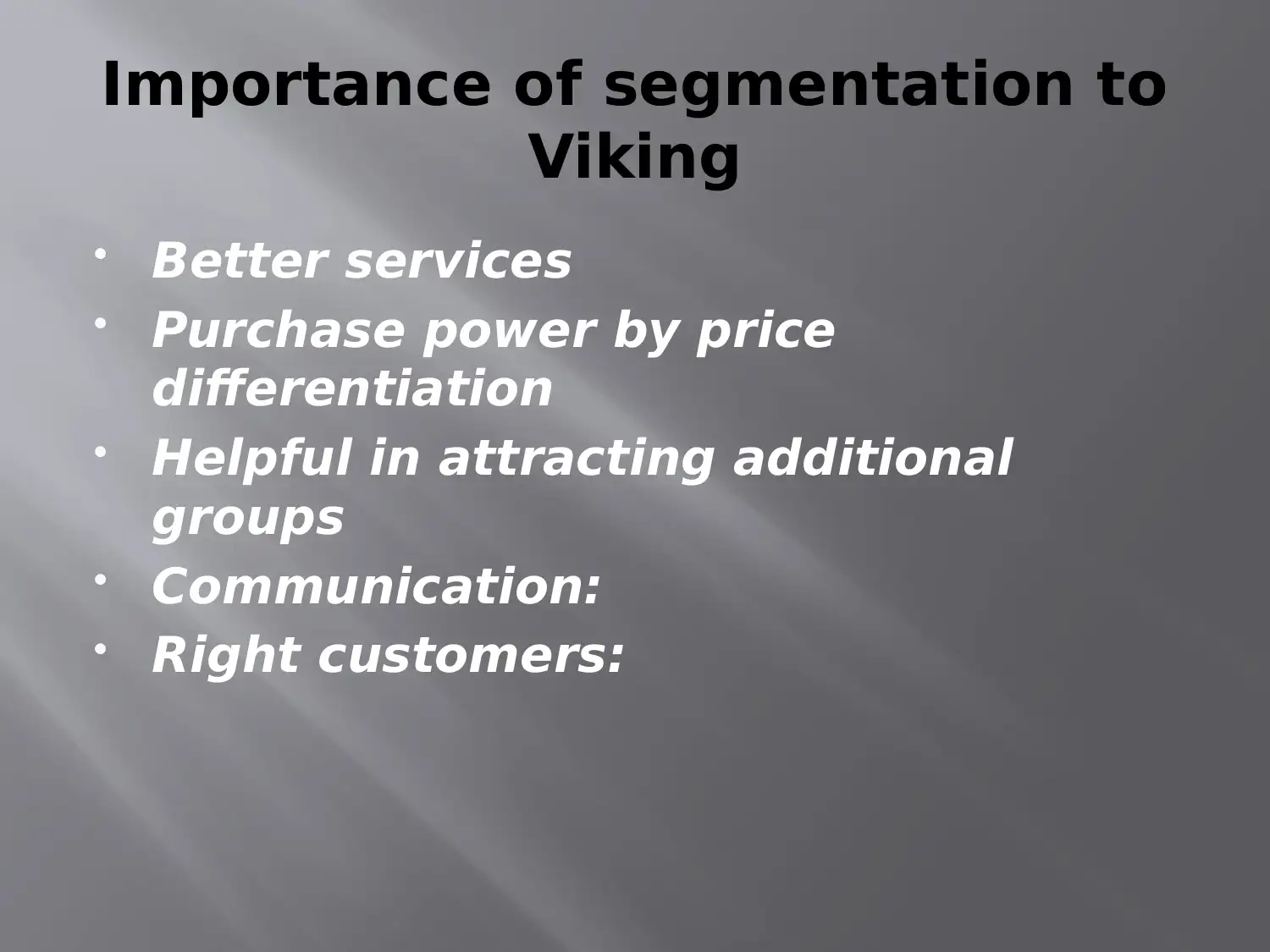
Importance of segmentation to
Viking
Better services
Purchase power by price
differentiation
Helpful in attracting additional
groups
Communication:
Right customers:
Viking
Better services
Purchase power by price
differentiation
Helpful in attracting additional
groups
Communication:
Right customers:
⊘ This is a preview!⊘
Do you want full access?
Subscribe today to unlock all pages.

Trusted by 1+ million students worldwide

Paraphrase This Document
Need a fresh take? Get an instant paraphrase of this document with our AI Paraphraser
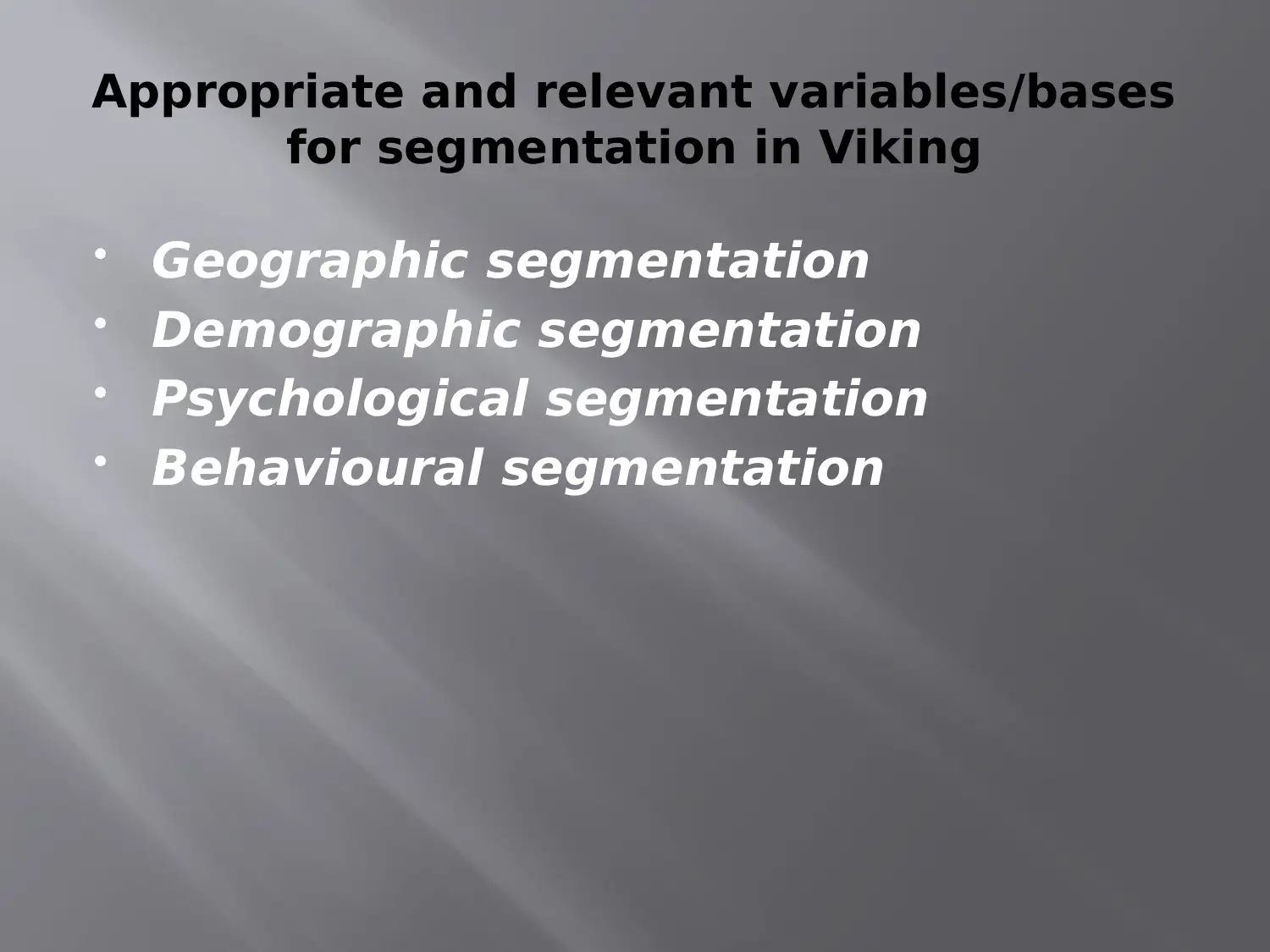
Appropriate and relevant variables/bases
for segmentation in Viking
Geographic segmentation
Demographic segmentation
Psychological segmentation
Behavioural segmentation
for segmentation in Viking
Geographic segmentation
Demographic segmentation
Psychological segmentation
Behavioural segmentation

Procedure for selection and
evaluation of market segment
Opportunity cost
Assessing Financial issues
Analyzing Structural attractiveness
Strategic direction
Marketing expertise
evaluation of market segment
Opportunity cost
Assessing Financial issues
Analyzing Structural attractiveness
Strategic direction
Marketing expertise
⊘ This is a preview!⊘
Do you want full access?
Subscribe today to unlock all pages.

Trusted by 1+ million students worldwide
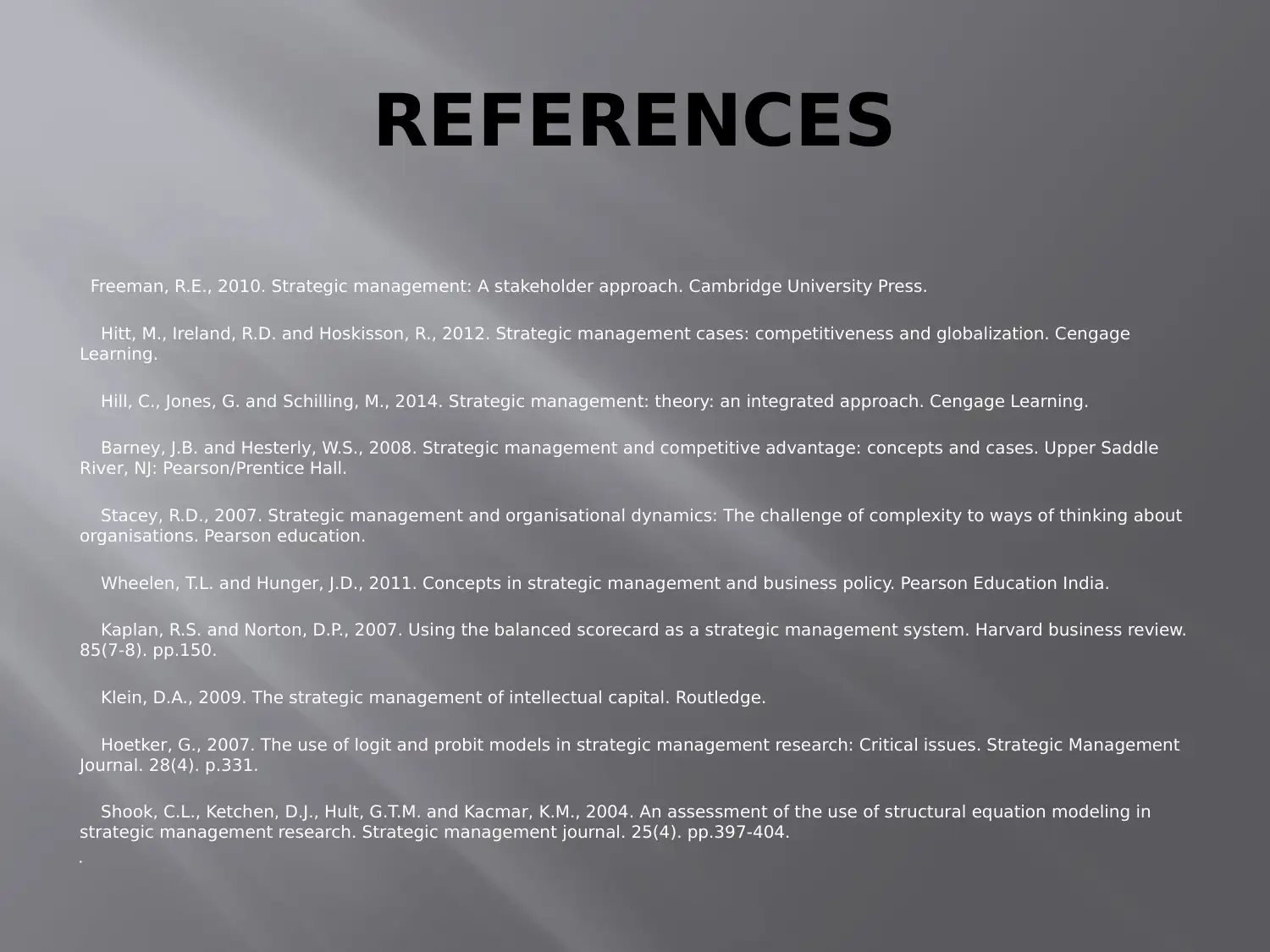
REFERENCES
Freeman, R.E., 2010. Strategic management: A stakeholder approach. Cambridge University Press.
Hitt, M., Ireland, R.D. and Hoskisson, R., 2012. Strategic management cases: competitiveness and globalization. Cengage
Learning.
Hill, C., Jones, G. and Schilling, M., 2014. Strategic management: theory: an integrated approach. Cengage Learning.
Barney, J.B. and Hesterly, W.S., 2008. Strategic management and competitive advantage: concepts and cases. Upper Saddle
River, NJ: Pearson/Prentice Hall.
Stacey, R.D., 2007. Strategic management and organisational dynamics: The challenge of complexity to ways of thinking about
organisations. Pearson education.
Wheelen, T.L. and Hunger, J.D., 2011. Concepts in strategic management and business policy. Pearson Education India.
Kaplan, R.S. and Norton, D.P., 2007. Using the balanced scorecard as a strategic management system. Harvard business review.
85(7-8). pp.150.
Klein, D.A., 2009. The strategic management of intellectual capital. Routledge.
Hoetker, G., 2007. The use of logit and probit models in strategic management research: Critical issues. Strategic Management
Journal. 28(4). p.331.
Shook, C.L., Ketchen, D.J., Hult, G.T.M. and Kacmar, K.M., 2004. An assessment of the use of structural equation modeling in
strategic management research. Strategic management journal. 25(4). pp.397-404.
Freeman, R.E., 2010. Strategic management: A stakeholder approach. Cambridge University Press.
Hitt, M., Ireland, R.D. and Hoskisson, R., 2012. Strategic management cases: competitiveness and globalization. Cengage
Learning.
Hill, C., Jones, G. and Schilling, M., 2014. Strategic management: theory: an integrated approach. Cengage Learning.
Barney, J.B. and Hesterly, W.S., 2008. Strategic management and competitive advantage: concepts and cases. Upper Saddle
River, NJ: Pearson/Prentice Hall.
Stacey, R.D., 2007. Strategic management and organisational dynamics: The challenge of complexity to ways of thinking about
organisations. Pearson education.
Wheelen, T.L. and Hunger, J.D., 2011. Concepts in strategic management and business policy. Pearson Education India.
Kaplan, R.S. and Norton, D.P., 2007. Using the balanced scorecard as a strategic management system. Harvard business review.
85(7-8). pp.150.
Klein, D.A., 2009. The strategic management of intellectual capital. Routledge.
Hoetker, G., 2007. The use of logit and probit models in strategic management research: Critical issues. Strategic Management
Journal. 28(4). p.331.
Shook, C.L., Ketchen, D.J., Hult, G.T.M. and Kacmar, K.M., 2004. An assessment of the use of structural equation modeling in
strategic management research. Strategic management journal. 25(4). pp.397-404.
1 out of 10
Your All-in-One AI-Powered Toolkit for Academic Success.
+13062052269
info@desklib.com
Available 24*7 on WhatsApp / Email
![[object Object]](/_next/static/media/star-bottom.7253800d.svg)
Unlock your academic potential
Copyright © 2020–2025 A2Z Services. All Rights Reserved. Developed and managed by ZUCOL.